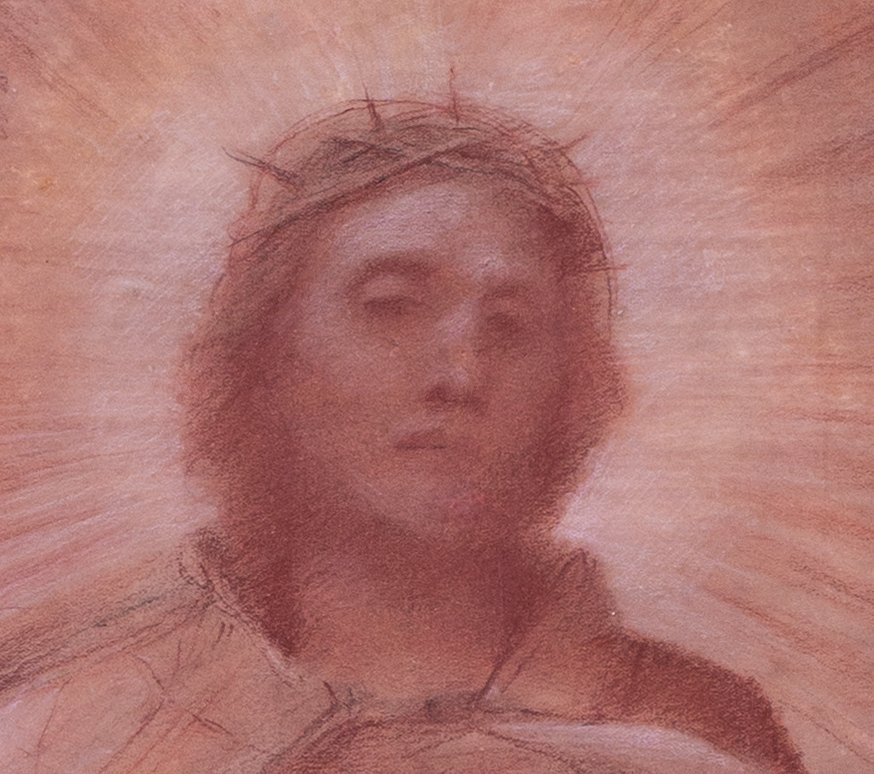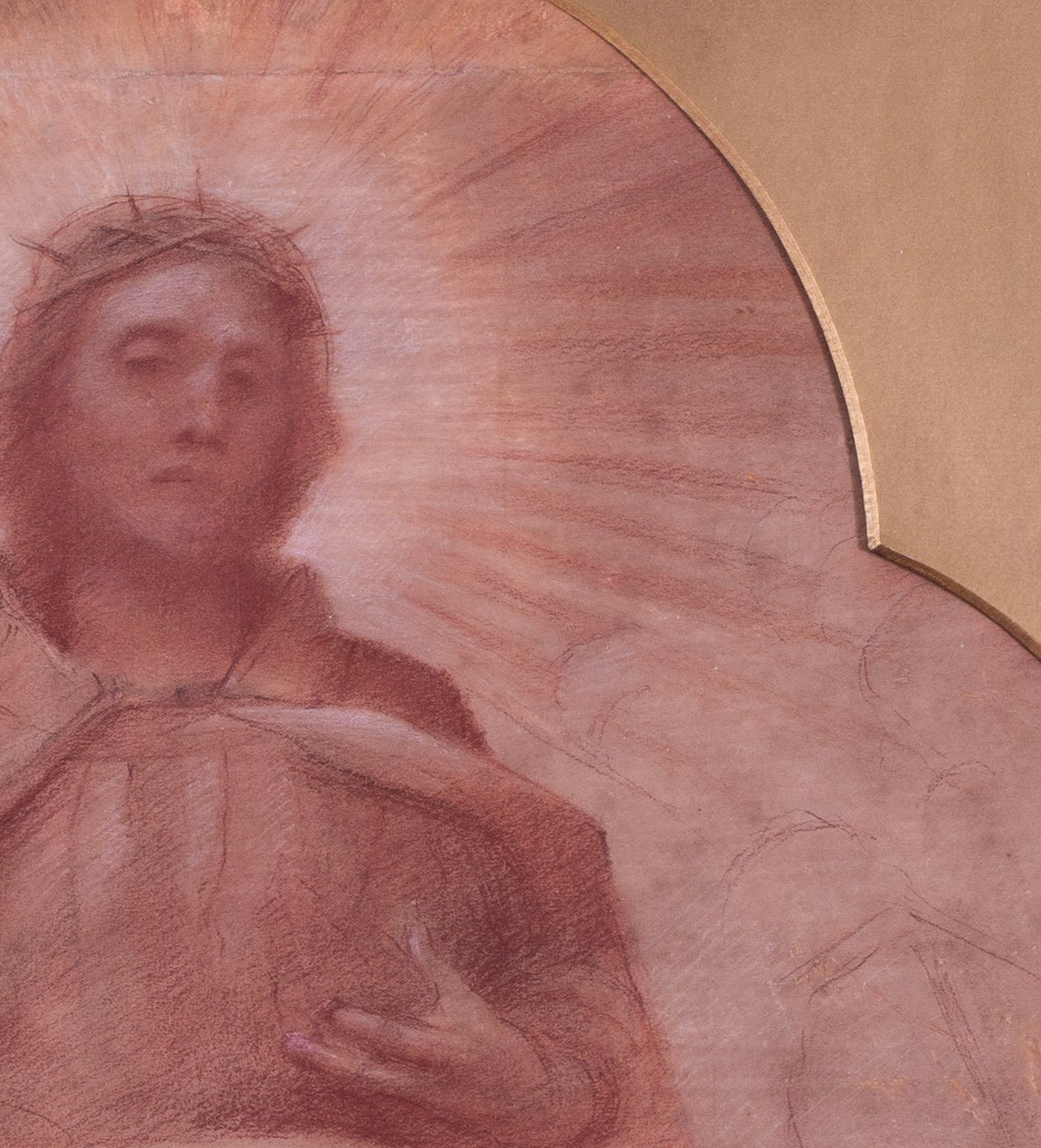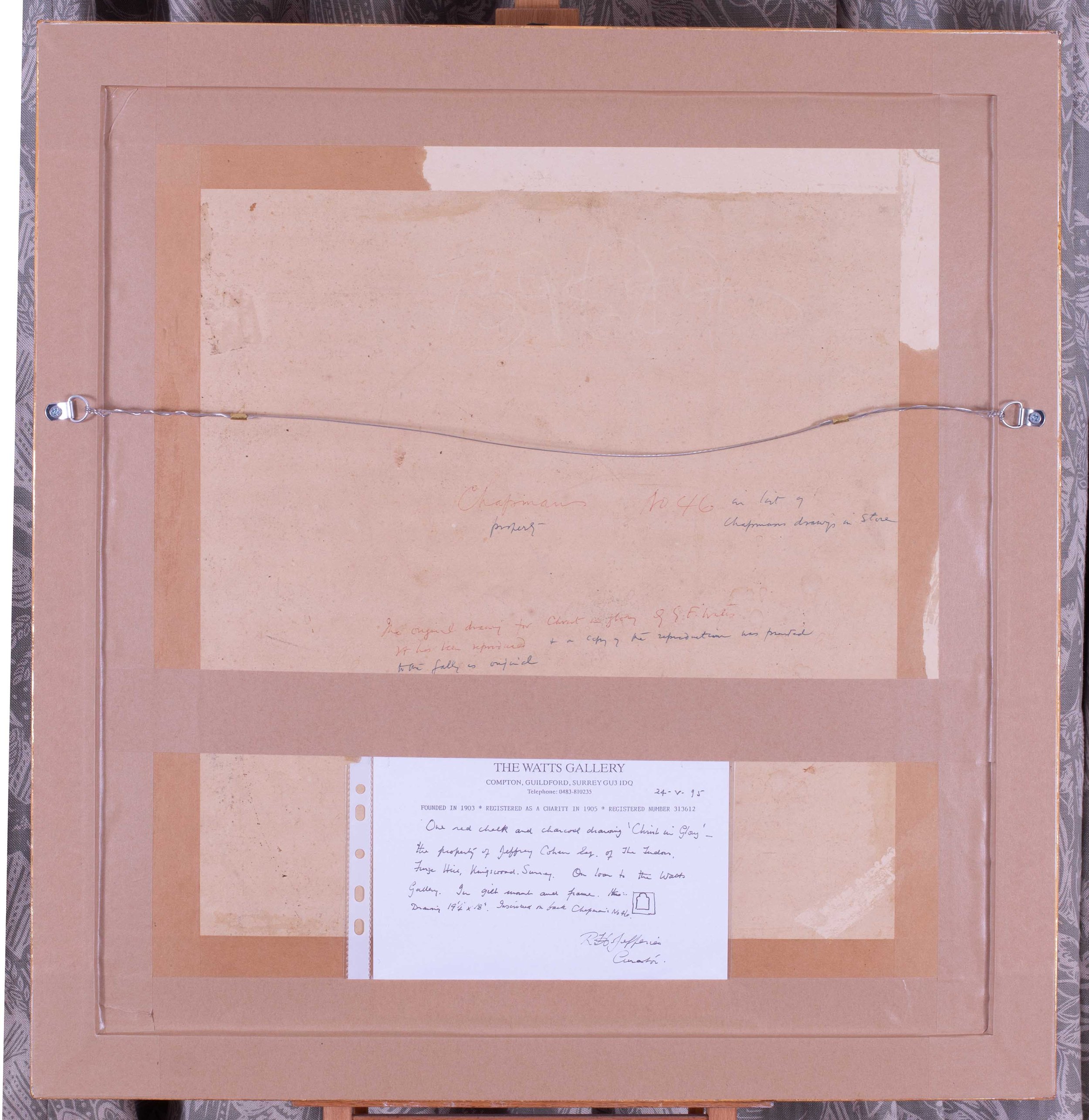 Image 1 of 7
Image 1 of 7

 Image 2 of 7
Image 2 of 7

 Image 3 of 7
Image 3 of 7

 Image 4 of 7
Image 4 of 7

 Image 5 of 7
Image 5 of 7

 Image 6 of 7
Image 6 of 7

 Image 7 of 7
Image 7 of 7








George Frederic Watts, 'Christ in Glory'
George Frederic Watts (British, 1817-1904)
Christ in Glory
Red chalk in an arched mount
Inscribed verso, including a signed letter verso from R H Jefferies, Curator of The Watts Gallery
19.25" x 18" (48.8 x 45.5cm)
Exhibited: The Watts Gallery, 1995.
Notes: This important drawing dates to the late 1850's and was the concept for the centre piece of a fresco commissioned for the chancel of St James the Less, Westminster
George Frederic Watts, who was interested in the Elgin Marbles from an early age, first worked in the studio of the sculptor William Behnes and then turned to portraits and later to history painting. He first exhibited at the Royal Academy in 1837 and travelled in Italy during the mid-1840s. In 1850 he moved into Little Holland House as the semi-permanent guest of Thoby Prinsep and his wife, Sara. He decorated the dining room there, and also a town house in London, and completed a mural for the Great Hall at Lincoln's Inn. Watts was elected a full member of the Royal Academy in 1867 and began to enjoy increasing success; in 1881–82 there was a retrospective of his work at the Grosvenor Gallery, London, the first such exhibition devoted to the oeuvre of a living artist.
George Frederic Watts (British, 1817-1904)
Christ in Glory
Red chalk in an arched mount
Inscribed verso, including a signed letter verso from R H Jefferies, Curator of The Watts Gallery
19.25" x 18" (48.8 x 45.5cm)
Exhibited: The Watts Gallery, 1995.
Notes: This important drawing dates to the late 1850's and was the concept for the centre piece of a fresco commissioned for the chancel of St James the Less, Westminster
George Frederic Watts, who was interested in the Elgin Marbles from an early age, first worked in the studio of the sculptor William Behnes and then turned to portraits and later to history painting. He first exhibited at the Royal Academy in 1837 and travelled in Italy during the mid-1840s. In 1850 he moved into Little Holland House as the semi-permanent guest of Thoby Prinsep and his wife, Sara. He decorated the dining room there, and also a town house in London, and completed a mural for the Great Hall at Lincoln's Inn. Watts was elected a full member of the Royal Academy in 1867 and began to enjoy increasing success; in 1881–82 there was a retrospective of his work at the Grosvenor Gallery, London, the first such exhibition devoted to the oeuvre of a living artist.
George Frederic Watts (British, 1817-1904)
Christ in Glory
Red chalk in an arched mount
Inscribed verso, including a signed letter verso from R H Jefferies, Curator of The Watts Gallery
19.25" x 18" (48.8 x 45.5cm)
Exhibited: The Watts Gallery, 1995.
Notes: This important drawing dates to the late 1850's and was the concept for the centre piece of a fresco commissioned for the chancel of St James the Less, Westminster
George Frederic Watts, who was interested in the Elgin Marbles from an early age, first worked in the studio of the sculptor William Behnes and then turned to portraits and later to history painting. He first exhibited at the Royal Academy in 1837 and travelled in Italy during the mid-1840s. In 1850 he moved into Little Holland House as the semi-permanent guest of Thoby Prinsep and his wife, Sara. He decorated the dining room there, and also a town house in London, and completed a mural for the Great Hall at Lincoln's Inn. Watts was elected a full member of the Royal Academy in 1867 and began to enjoy increasing success; in 1881–82 there was a retrospective of his work at the Grosvenor Gallery, London, the first such exhibition devoted to the oeuvre of a living artist.
